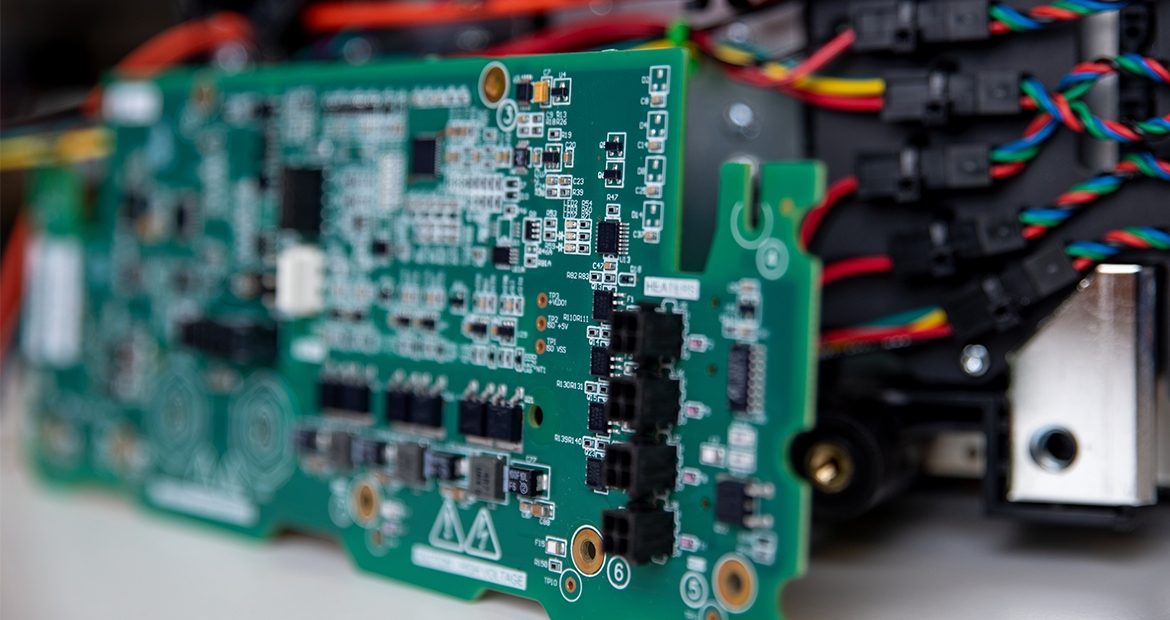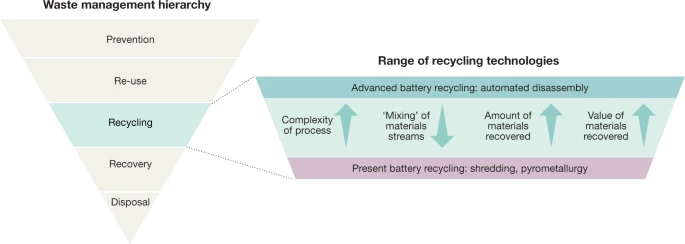What happens to lithium-ion batteries at the end of their life?
By Katherine de Guia, Communications Specialist - New Power

With the market for electric vehicles (EVs) rapidly growing as customers rush to meet global targets for lowering greenhouse gas emissions and improving air quality, the increasing number of EVs pose a waste-management challenge. These lithium-ion (Li-ion) batteries offer a zero-emissions transportation solution, but they don’t last forever. So, what happens to them once they’ve reached the end of their life?
Improper disposal of end-of-life EV batteries lands them in landfills and, unsurprisingly, comes with negative environmental implications. When Cummins first began investing in electrification, EV waste-management was a key issue we wanted, and needed, to solve.
What is an end-of-life battery?
End-of-life batteries are exactly that – batteries that have reached the end of their usefulness and/or lifespan and no longer operate at sufficient capacity. The lifespan of an EV battery depends on the application (i.e. passenger cars, transit/school buses, heavy-duty trucks) and vehicle architecture (i.e. fully electric or plug-in hybrid). For Cummins applications, an EV lithium-ion battery can operate at sufficient capacity anywhere between three and 12 years, depending on the use case.
As a newer technology, none of Cummins’ battery packs or modules have reached their end-of-life yet which allows us to make sustainable choices on how to best leverage them once their lifespan has come to an end. Currently we are focusing on two areas in the waste management hierarchy and range of recycling options – reuse and recycling.

How do we reuse lithium-ion batteries?
Despite no longer operating at peak performance, the end-of-life EV battery still holds 70-80% of its initial capacity. These batteries have the immense potential to be repurposed into second-life batteries for use in less demanding applications (i.e. stationary energy storage).
To better explore the potential environmental and economic advantages of second-life Li-ion batteries, Cummins partnered with the University of California San Diego (UCSD) in 2019. This collaboration has allowed us to artificially degrade EV batteries in the UCSD battery validation lab and integrate them into the campus’ micro-grid. Using batteries with varying levels of degradation, our shared goal is to emulate the scenario of using second-life batteries gathered from first-fit applications and repurposed into secondary-fit applications.
Through this study, we artificially aged batteries and placed them in a micro-grid environment in March 2021 to act as energy storage. UCSD’s lab continues to adjust and analyze the viable business and technical approaches to effectively reuse Li-ion EV batteries, with a target wrap-up date of Dec. 2021.
How do we recycle lithium-ion batteries?
If a battery cannot be reused in a secondary application, components of it may be recycled. Through battery recycling, as many materials as possible are recovered while preserving any structural value and quality the batteries have. While reuse is considered preferable to recycling in the waste-management hierarchy, end-of-life EV batteries may provide an excellent secondary source of critical materials in the future.
Elements and materials contained in electric-vehicle batteries are not commercially available in many nations, and access to those resources is crucial to ensure a stable supply chain. With California passing executive order N-79-20 and forming an MOU with 14 other states to advance and accelerate the market for electric medium- and heavy-duty vehicles, the production of Li-ion batteries is projected to rapidly accelerate in the coming years. To keep up with production demands, there will need to be a careful cultivation of the resources required to manufacture Li-ion EV batteries to ensure the sustainability of the automotive industry.
Establishing sustainable recycling processes to extract critical materials from end-of-life batteries is a potential solution for keeping up with resource demand. This is why Cummins is working with Li-Cycle, North America's largest lithium-ion battery resource recycling company, to utilize their proprietary commercial process for recovering critical high-grade materials. Working with Li-Cycle allows for the safe processing of Li-ion batteries without any landfilled waste and minimal greenhouse gas emissions (GHGs), thus providing a sustainable end-of-life pathway.
Supporting the future of electrification
More and more companies are pivoting toward sustainable power sources and energy storage and committing to lowering GHGs and product waste. To support this transition, we must explore all aspects of sustainability, from sourcing materials to manufacturing batteries to managing the future surplus of end-of-life batteries.
Establishing effective reuse and recycling of batteries is necessary for a closed-loop supply chain and creating full life-cycle battery management. And establishing best practices now reduces environmental impact in the future. Cummins is committed to end-to-end sustainability to effectively leverage the full benefits of electrification.
Author Profiles
Katherine de Guia, Communications Specialist - New Power
Communications Specialist - New Power
Related Tags